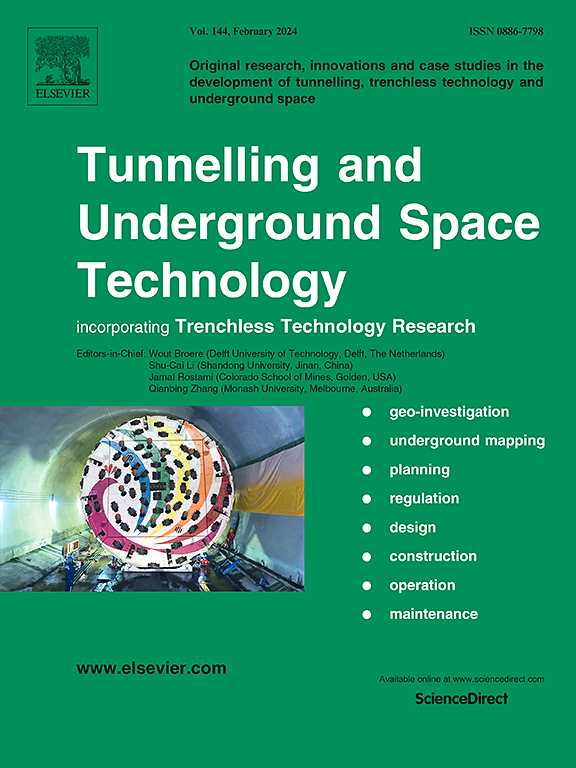Investigation of the liquefying characteristics of saturated loess surrounding tunnels under seismic loading based on large-scale shaking table tests
IF 6.7
1区 工程技术
Q1 CONSTRUCTION & BUILDING TECHNOLOGY
引用次数: 0
Abstract
This study investigates the liquefaction potential of saturated loess surrounding tunnels in the Loess Plateau region and the effect of loess liquefaction on tunnel seismic response. A large (1:20 scale) shaking table model was designed and built to replicate a tunnel that is under construction on the Lanzhou–Hezuo Railway in China. Shaking table tests were then conducted using local time-history records of strong earthquake acceleration. The saturation loess surrounding the tunnel model did not liquefy under the seismic motion induced by the seismic precautionary intensity. However, loess surrounding the tunnel liquefied before the soil far from the tunnel. The effects of loess saturation, loess liquefaction, and the presence of the tunnel structure on seismic intensity (either amplification or attenuation) were also analyzed, and the variations of unsaturated and saturated loss before and after seismic motion were discussed. The findings provide a reference for the seismic design and construction of tunnels where the surrounding loess is or will likely be in a saturated state.
求助全文
约1分钟内获得全文
求助全文
来源期刊

Tunnelling and Underground Space Technology
工程技术-工程:土木
CiteScore
11.90
自引率
18.80%
发文量
454
审稿时长
10.8 months
期刊介绍:
Tunnelling and Underground Space Technology is an international journal which publishes authoritative articles encompassing the development of innovative uses of underground space and the results of high quality research into improved, more cost-effective techniques for the planning, geo-investigation, design, construction, operation and maintenance of underground and earth-sheltered structures. The journal provides an effective vehicle for the improved worldwide exchange of information on developments in underground technology - and the experience gained from its use - and is strongly committed to publishing papers on the interdisciplinary aspects of creating, planning, and regulating underground space.
 求助内容:
求助内容: 应助结果提醒方式:
应助结果提醒方式:


